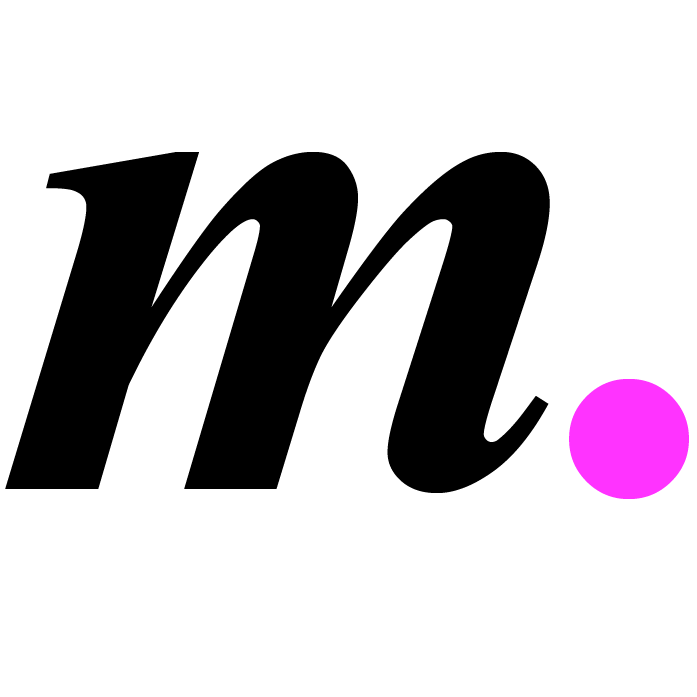Series // Micromegalic Inscriptions.
Source // I too was in Arcadia.
London, Winter and Spring 2017.
Extended research is reported in the book Micromegalic Inscription.
Research supervised by Oliver Domeisen.
—
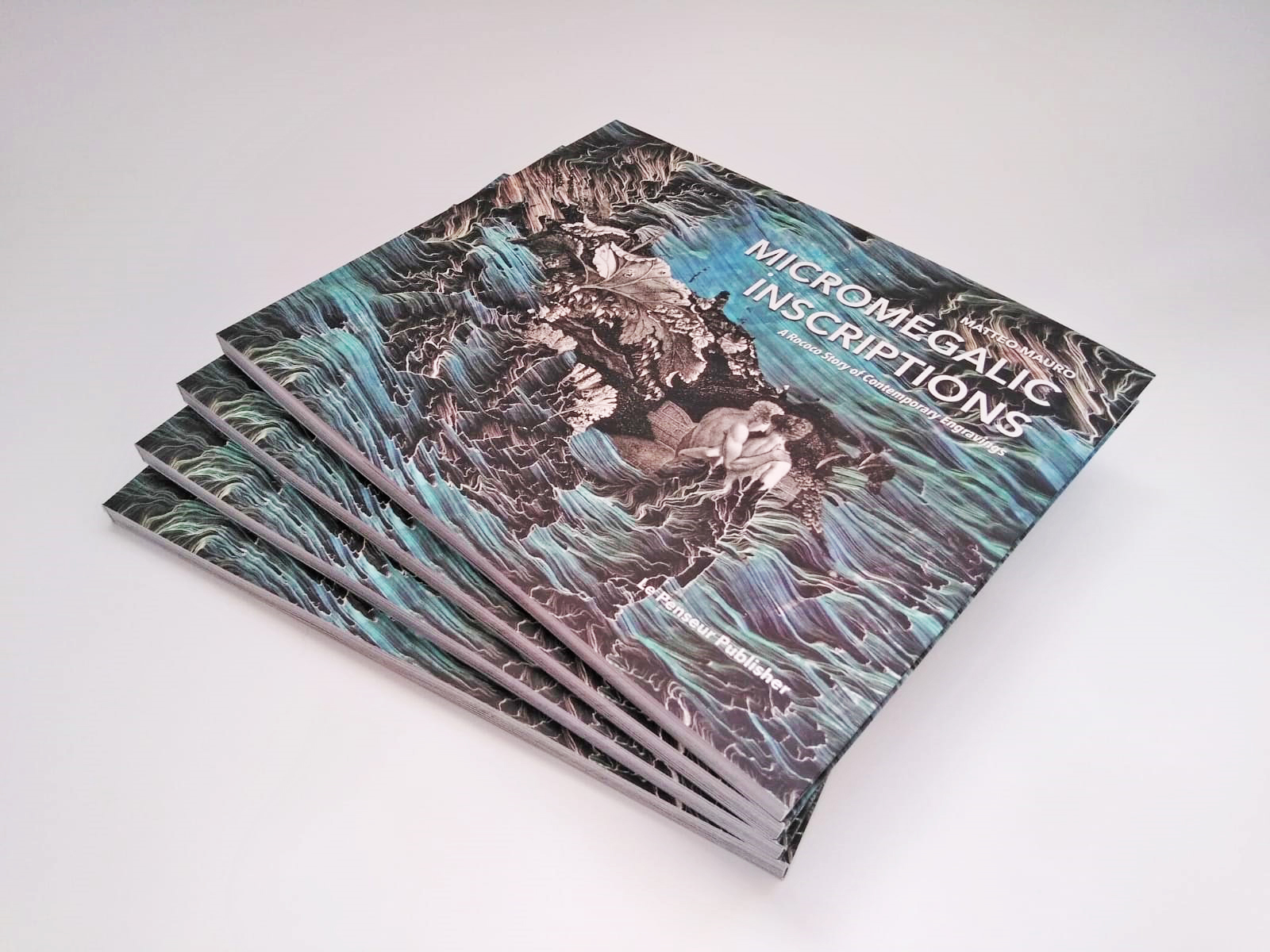
Micromegalic Inscriptions are computational engravings of traced and abstracted capriccios. These digital creations, which lie in the realm of Generative Art, do not just reinterpret the mechanical processes of traditional engraving, but being reproducible infinite times and anywhere, exemplify the evolution of mass production practices and the inevitable symbiosis between the man and the machine. Thus, morphogenic spontaneity and mathematical constraints are processed by a software, to create new metaphors to enrich traditional paradigms.
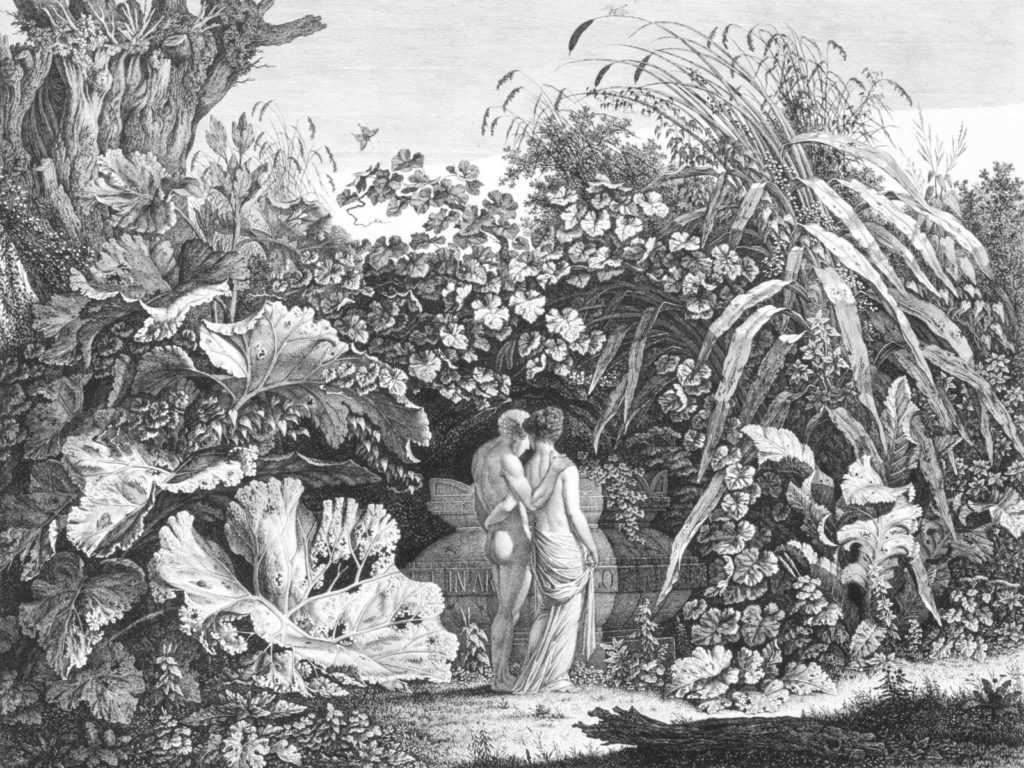

These serie of artworks reinterpret Wilhelm Kolbe’s etching “I too was in Arcadia”. An amazingly executed print that captivates the eye for its sublime line work as much as for its pictorial composition and content. Nature is controlled to create harmony. Rocailles hides behind the pictured, but are not explicit. A framing giant vegetation dwarfs the image content, activating the micromegalistic exchange. Finally, the foreshadow of the two human bodies has the potential of abstracting them in to silhouettes, offering to the eye of the observer a point of contact between reality and fantasy. The abstraction process aims to transfer the elegance of the source, into a contemporary aesthetic. The image-origin is traced with a fine weight line, thus the digital canvas is marked. Around those marks, the loop begins to run their infinite linear variations. The pixel’s strokes sense and react to the previous inscriptions. Conflict becomes either junction or repulsion. Creative perception and gestural action are totally computed.
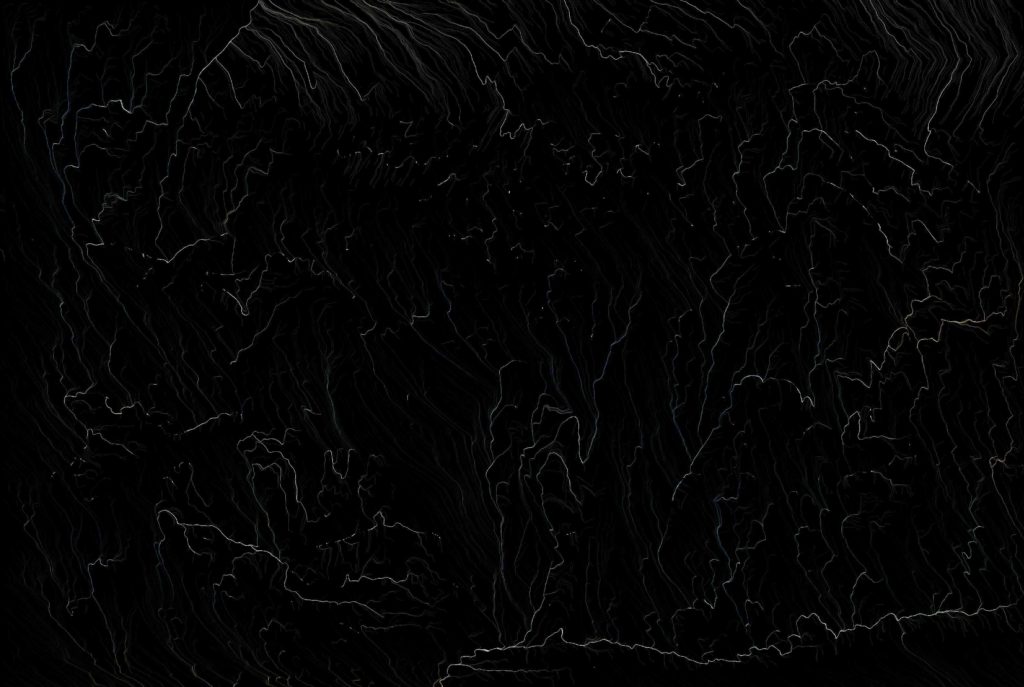
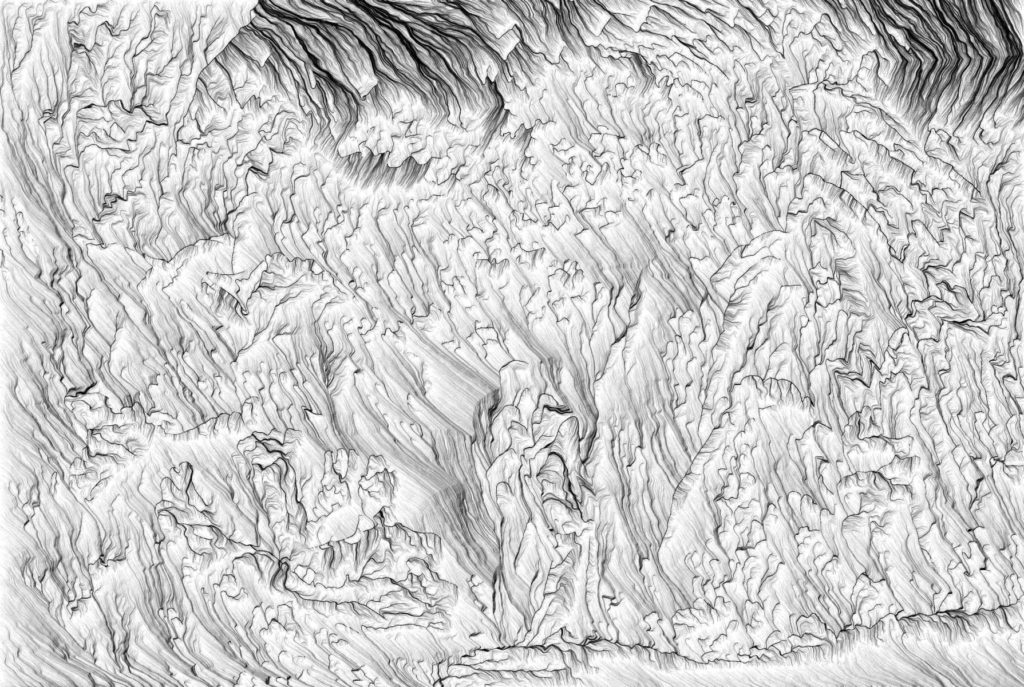
The bodies of the two lovers partially dissolve, relating to the Rococo’s resistance to form finite figures. Besides, similarly to Rococo paintings these inscriptions do not follow the rectangular frame of the simulation, but, following the traced image, create abstracted forms of nature which frame the recognisable central silhouettes. A microscopic examination reveals the fragmented serpentine movements branching-out as in micromegalic fractal roots, or the systematically folding lines accumulating in the formation of surfaces. There is an endless growth and metamorphosis from the smallest digital element (pixel) to the scale less computation painting. The continuous inscribed sinusoidal paths give to the artwork a sense of dynamic movement. From the simulation, the printed image captures and holds that sense of motion, which is typical of the rocaille motif. Of these creations, it is to be appreciated the tension between the systematic process of tracing and its potential to generate disorder, both harmonically coexisting in the chaos of uncountable lines in empathy and abstraction.
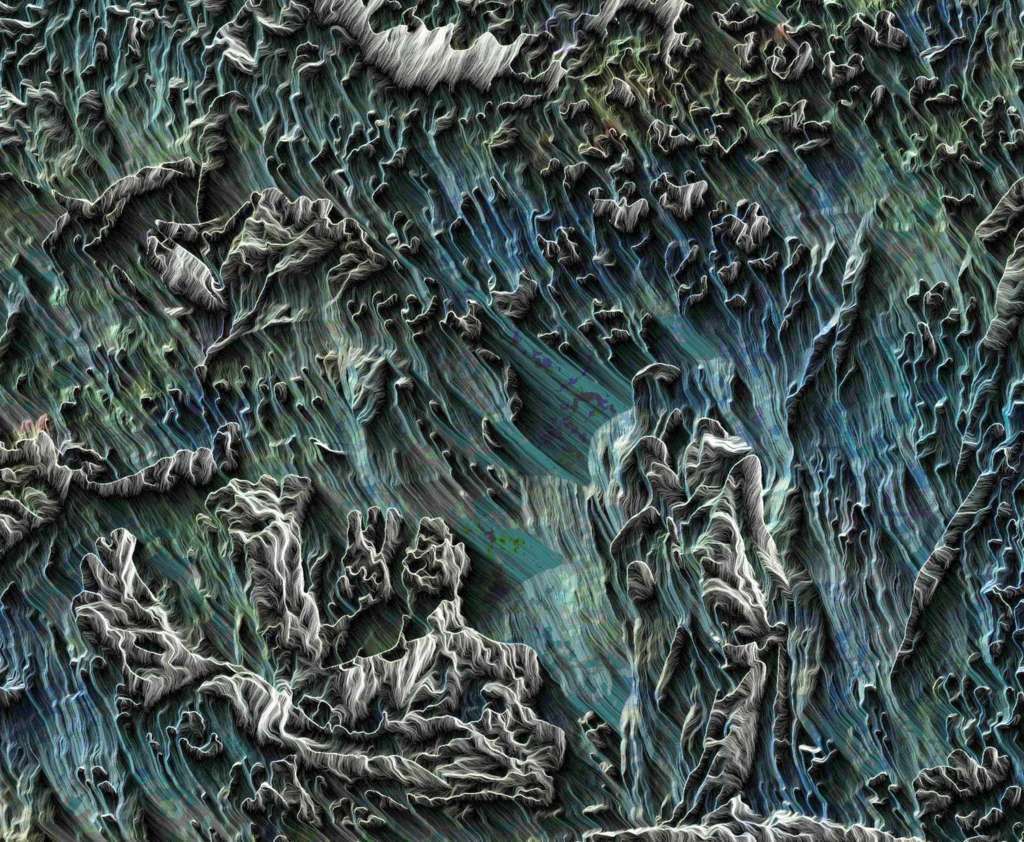

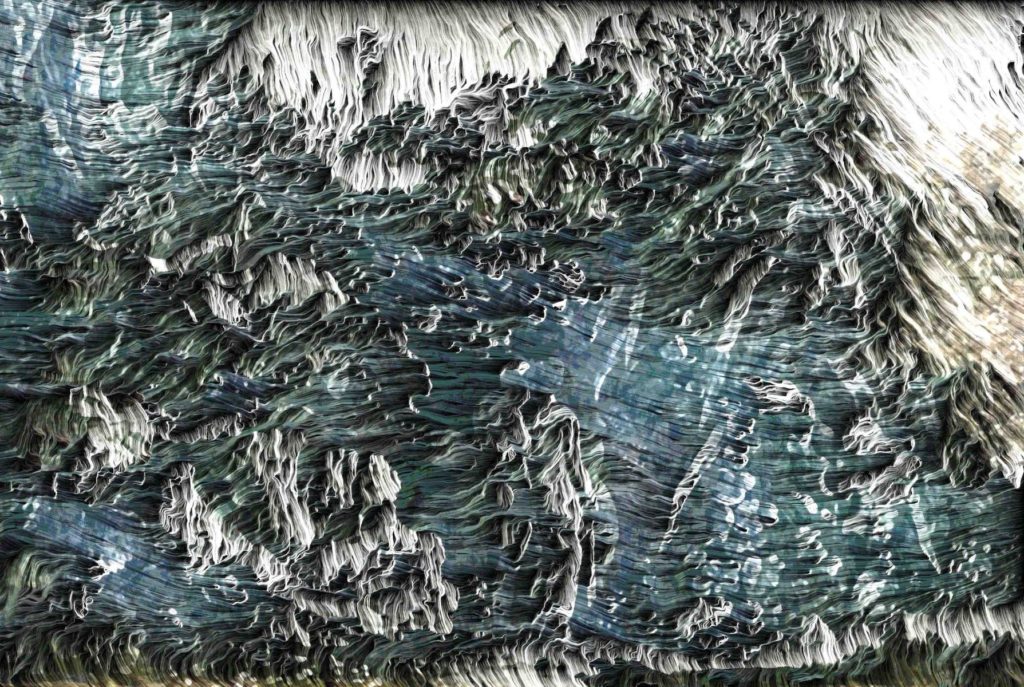
[Italian] Micromegalic Inscriptions è un progetto a cui Matteo Mauro ha lavorato a Londra dal 2014 insieme a Oliver Domeisen, storico dell’arte, esperto di ornamento ed ex curatore del Victoria and Albert Museum. Le opere che costituiscono la serie sono il risultato di una ricerca artistica incentrata non solo sulla tecnica pittorica e sulle trasformazioni sorte dall’applicazione delle nuove tecnologie, ma anche di un approfondimento teorico. Aspetto a cui ha dato un contributo decisivo la figura di Domeisen con la sua profondissima conoscenza delle tecniche di stampa e degli stili d’arte, sia in ambito classico che contemporaneo. È proprio questa fusione il fulcro dell’opera principale delle Micromegalic Inscriptions: lo studio microscopico e storico di acqueforti rococò e, in particolare, I too was in Arcadia di Wilhelm Kolbe sono l’input per una sperimentazione ben precisa che consiste nella reinterpretazione in chiave contemporanea e computazionale degli eleganti capricci che delineano la composizione del dipinto originario. L’armonia della natura e i soggetti umani non proprio espliciti vengono trasferiti esattamente nel processo messo in atto da Matteo Mauro. L’artista, attraverso l’astrazione delle forme, ricrea quelle atmosfere sospese tra il reale e il fantastico, proseguendo quel viaggio sperimentale cui il dinamismo metamorfico del Rococò aveva dato inizio.
Un viaggio che possiamo percorrere con il nostro impatto di fruitori contemporanei e del quale possiamo diventare consapevoli con la lettura del testo, frutto del progetto, cioè Micromegalic Inscription – A Rococo story of Contemporary Engravings, in edizione mondiale per Edizioni Le Penseur, scritto da Matteo Mauro con introduzione di Oliver Domeisen.
—
#Generative Art, #Rococo Prints, #Engraving.
Share